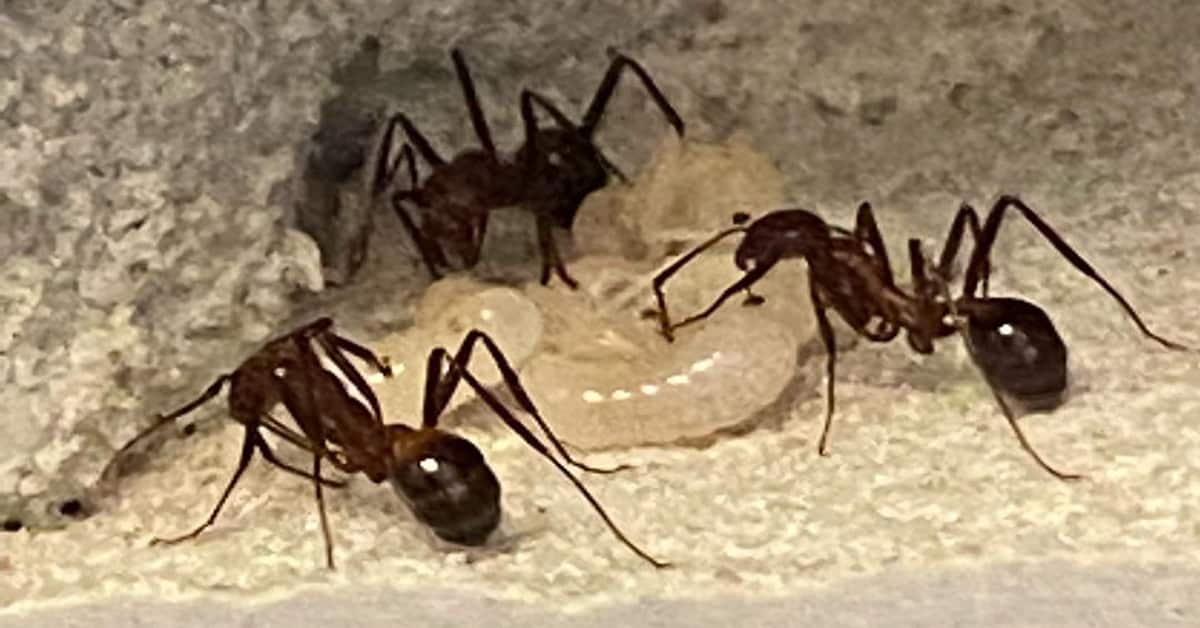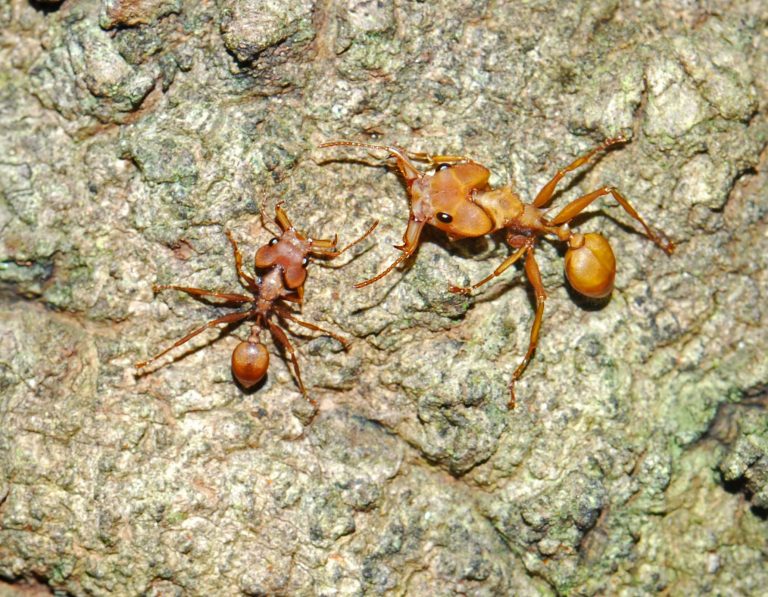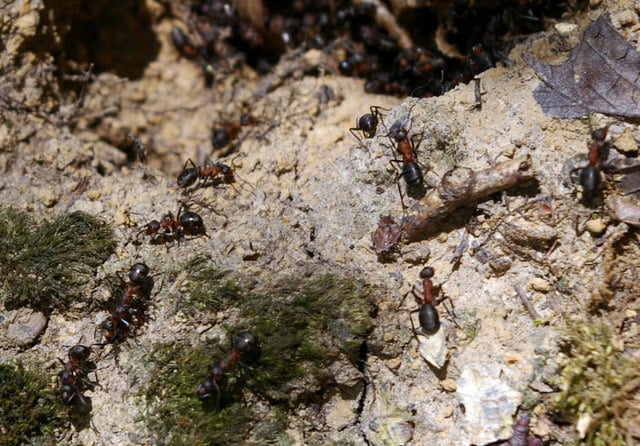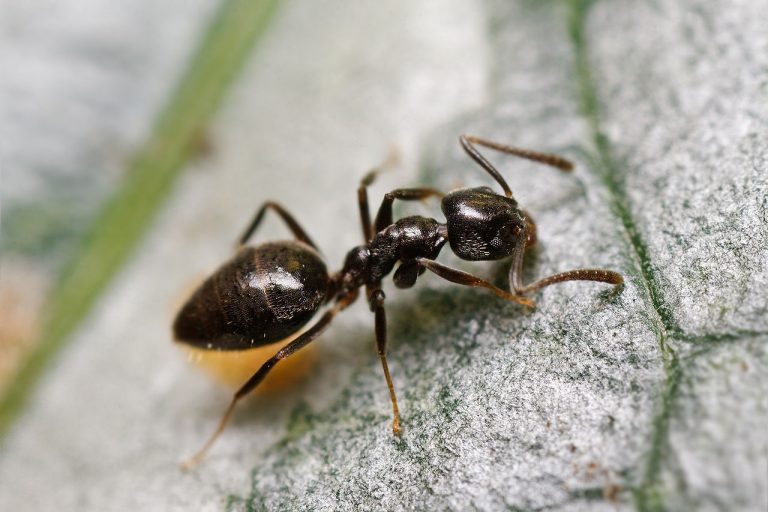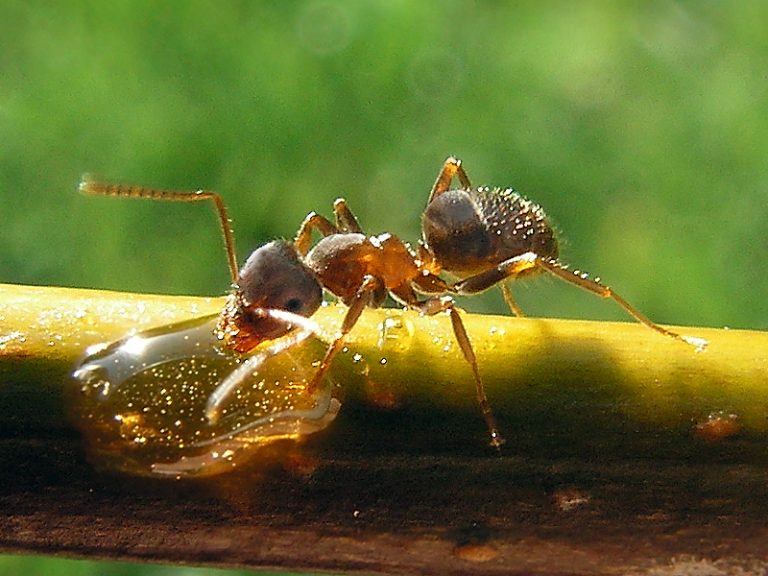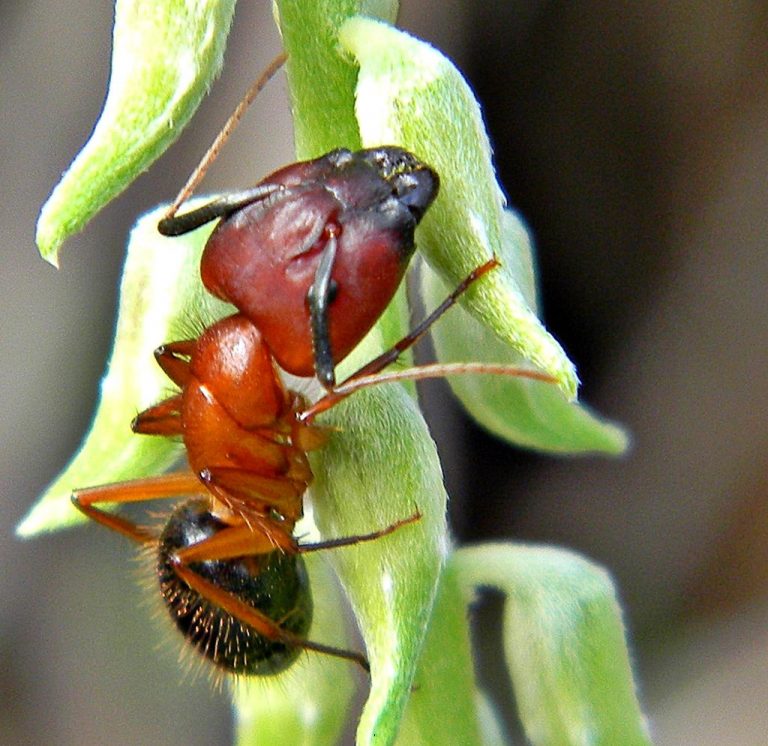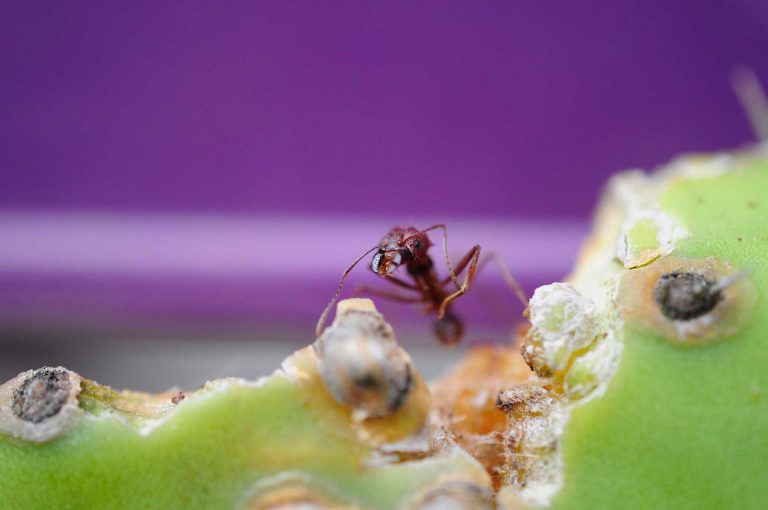Ant Eggs – How They’re Formed & How to Identify
Ants are very interesting insects that belong to the family of Formicidae. There are more than 22, 000 species of ant discovered today, and they are one of the most numerous insects in the world. Ants lay eggs for reproduction. However, this is a pretty complicated process, and the ant eggs also come with unique characteristics.
Everybody will agree that ants are very interesting creatures that have many habits and traits that no other living creature has. Therefore, if you were wondering about how they reproduce, what the ant eggs look like, what the ant’s life cycle is, and how to identify their eggs, then you are reading the right article.
Life Cycle Of Ants
Before actually exploring the ant eggs, let’s generally discuss ants’ life cycle to better visualize their development stages.
An ant’s life begins in an egg stage. If the egg is fertilized, the offspring will be a male diploid, otherwise a female haploid. Ants go through a whole metamorphosis during their development, starting as larvae and evolving into pupae before becoming adults. The larva can not move around and therefore must be fed and cared for by others.
Ants can regurgitate liquid food from their crops, and this process is called Trophallaxis. This process provides sustenance to the larvae. Adults exchange meals in the “social stomach” in a similar manner. Larvae may also get solid food, such as small pieces of the prey, seeds, and trophic eggs. They can eat those things, especially in the later stages.
The larvae go through four or five molts before they reach the pupal stage. In contrast to a butterfly pupa, this pupa’s appendages are free and not connected to the body. In certain species, the nutrition the larvae get affects the differentiation into female workers and queens, as well as determining the specific castes of workers.
Caste determination is still a topic of research due to the complexity of genetic factors and the regulation of gene expression by the developmental environment. Drones, also known as winged male ants, emerge from pupae just like typically winged breeding females.
Some species, like army ants, have queens without wings. Pupae and larvae must be maintained at relatively consistent temperatures in order to develop properly and be able to move around in their nests.
The first few days of an ergate’s adult life are devoted to taking care of the queen and young. She moves on to excavating and other nest-related tasks before protecting the nest and hunting. Temporal castes are established through these shifts, and all this happens pretty quickly. That is why it is called “temporal castes.”
Ant colonies have a lengthy lifespan. Workers have a lifespan of one to three years, whereas queens can live up to 30 years. Males, on the other hand, are more transient, having just a few weeks of life. Queen ants live 100 times longer than other insects that are of similar size.
In the tropics, ants are active throughout the year, but in colder climates, they hibernate to survive the winter. There are many different types of inactivity. For example, some temperate species have larvae that enter an inactive state (diapause), while others only have adults who spend the winter at a decreased level of activity.
How Are Ant Eggs Formed?
When a queen ant finds the perfect nesting location, new ant colonies develop there. If a female has recently mated with a male, she can start a new colony on her own. The queen will lay a much smaller number of eggs in this initial batch since she won’t have enough food to produce more.
So the process goes like this, the females have the ability to fertilize some eggs with the sperm that they have stored. This way, diploid workers are produced. Then, the rest of the eggs that remain unfertilized produce drones.
In case Ant queens that have not yet located their nests produce a large number of eggs at once, these eggs are all still in the larval stage and do not have the adult traits. Until they are prepared to go on to their next stage, these larval forms are nourished by the colony’s worker ants.
When the worker ants are first hatched, they are called nanitics. In comparison to others, they are smaller in size. However, they have the ability to start working immediately. Their job is mainly to make the nest larger and to create food storage. Additionally, they are the ones that care for the eggs that have not yet been developed.
An ant colony, also known as an ant nest, is where ants lay their eggs, and this is a place where they are cared for until they develop into larvae. After that, the ants provide them with food made from other insects that the worker ants have killed and then brought back to fill up storage spaces inside the nests or colonies.
About 70% of ant eggs are made from fat. Ants have the largest fat content of any insect, which explains why they have such small bodies but can perform such a great deal of labor. The stomach and intestine make up the majority of the ant’s body, and there is minimal bone or muscular tissue. As a result of their high rate of energy consumption, they must consume a lot of food to survive.
How To Identify Ant Eggs
Ant queens produce ant eggs. In the majority of ant species, they resemble miniature ant larvae. They have a spherical form, are yellowish-white in color, and lack legs.
Ants often lay dozens to hundreds of eggs in each nest. The amount varies between species. Some individual colonies may generate far more than others, especially when the environment isn’t optimal for development.
How Long Does the Egg Phase Last?
The usual hatching time for ant eggs is 12 days. Ant eggs, on the other hand, have been known to remain latent for up to 35 years before hatching. The gestation phase is an excellent illustration of how tough ants are.
Some species even use parthenogenesis. This is a process of producing eggs without male fertilization. However, from such eggs, only female ants are produced.
Ant Eggs As A Delicacy
The term “ant eggs” refers to both the eggs and pupae of weaver ants. Ant eggs are a delicacy in Thailand and in a number of Southeast Asian nations, including Laos and Northeastern. They are high in protein and go well with soups, omelets, and salads because of their sourness and pop. In northern Thailand, people consume ants similar to maeng mun that lay eggs. Maeng mun are a kind of subterranean ant.
Ant eggs are an excellent source of protein. There are more than 8.2 grams of protein in 100 grams. It has fewer calories and fat than chicken eggs since it only has 2.6 grams of fat compared to more than 11.7 grams in chicken eggs. It also includes vitamins B1, B2, and Niacin and other minerals like calcium, phosphorus, iron, salt, and potassium.
Spicy Raw Ant Egg Salad is one recipe that uses red ant eggs. The dish seems to be the most well-liked. Red ant eggs are frequently used as a substitute for lemon juice or vinegar in Thai cooking because they contain acetic acid. One of Laos’s traditional dishes is ant egg soup.
Red ant egg farming is seen as a beneficial, affordable industry for underdeveloped countries and communities. On a single tree, such as mango or palm, several nests can be formed, and they are provided with extra food in the form of water and sugar. It keeps going until the eggs are ready to be gathered.
The time period for spawning is September through December and January through April. In May and June, it is possible to harvest eggs, but with caution to prevent harm to the nest’s surviving ants or damage to the eggs themselves.
How To Get Rid Of Ant Eggs?
Ant larvae are easier to get rid of than ant eggs. Some ant species’ eggs can be destroyed by boiling them in water. However, this technique does not work for ant species that construct their nests underground or within trees.
If you want to entirely eliminate ant eggs, you will need the help of pesticides. If you dig up your entire garden and replace it with fresh soil that has been treated with any kind of pesticide. This way, you might be able to prevent ants from laying their egg sacs on top of the soil.
However, if there is already an ant queen in the area, she will rapidly begin laying the eggs for her own ant colonies as her current colony begins to decline.
Bottom Line
Ants lay their eggs in underground nests. From this point on, they pass through many phases until becoming fully developed. Around the world, there are several distinct ant species, and each variety has an ant egg that is unique in form.
While some may be more shaped like beans, some ant eggs may resemble tiny grains of rice or seeds. Ant eggs are used in Thai cuisine and are considered a national delicacy.

Nato is a content writer and researcher with a background in psychology who’s eager to explore the wonders of nature. As a travel enthusiast and animal lover, she hopes to inspire others to discover and cherish the beauty and importance of the natural world.

